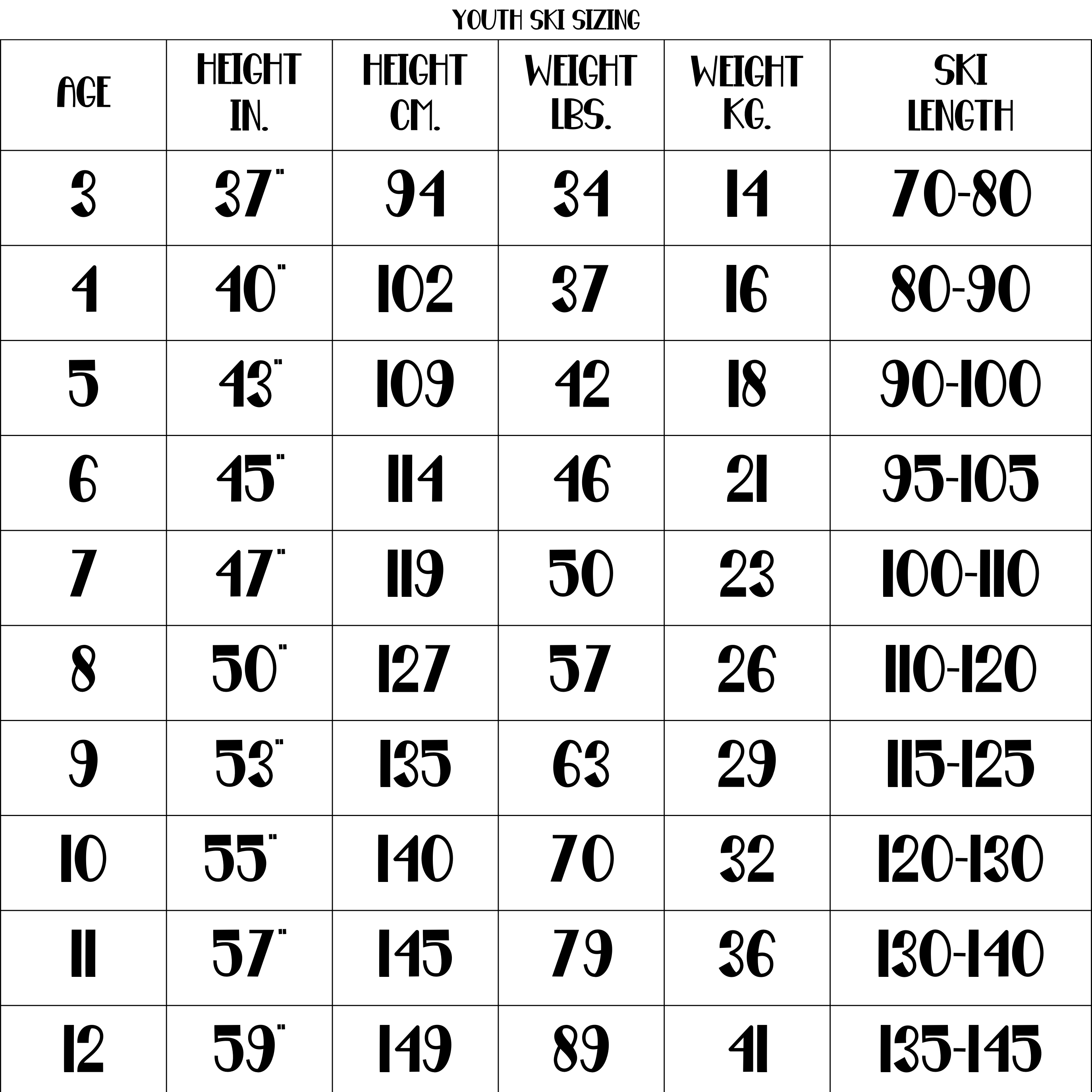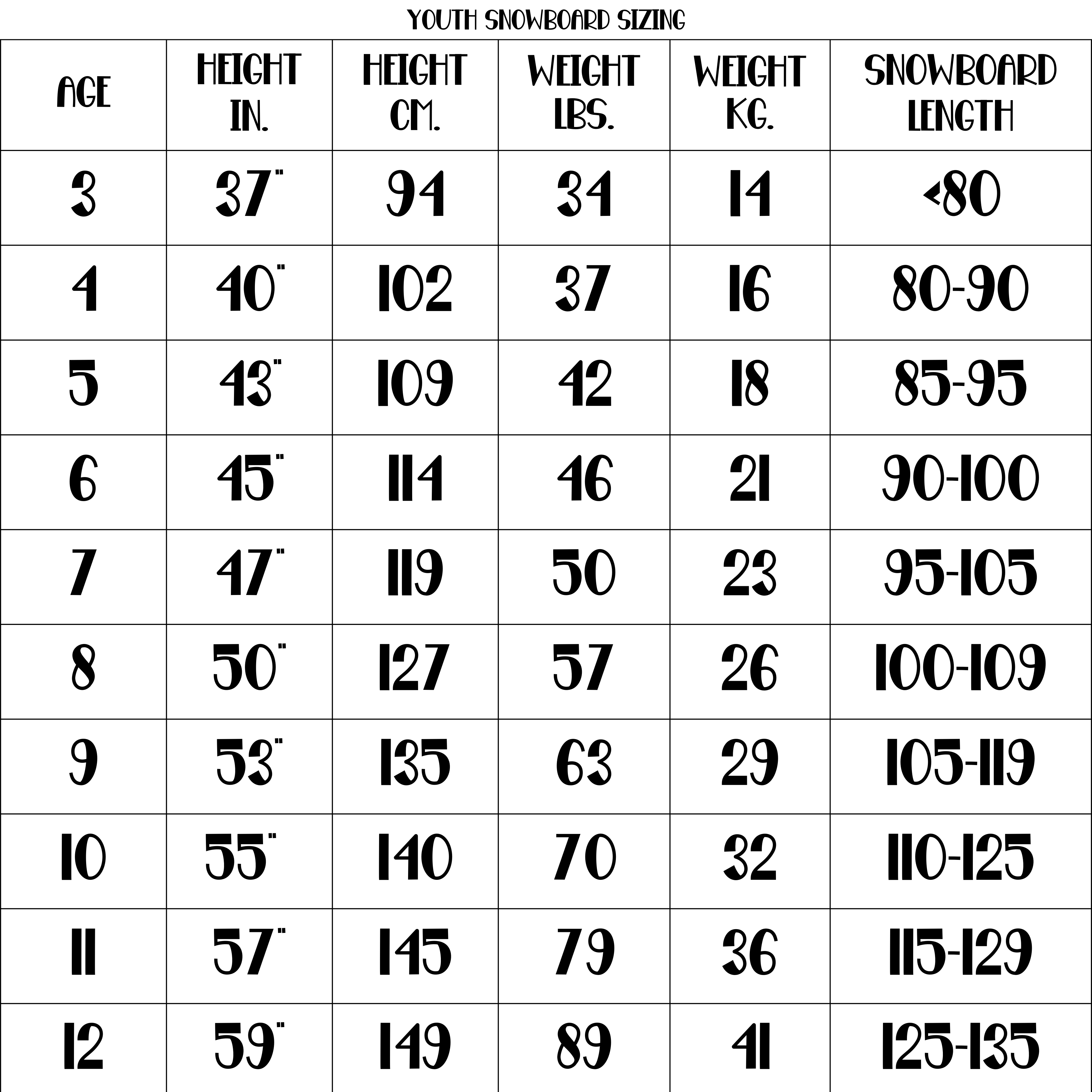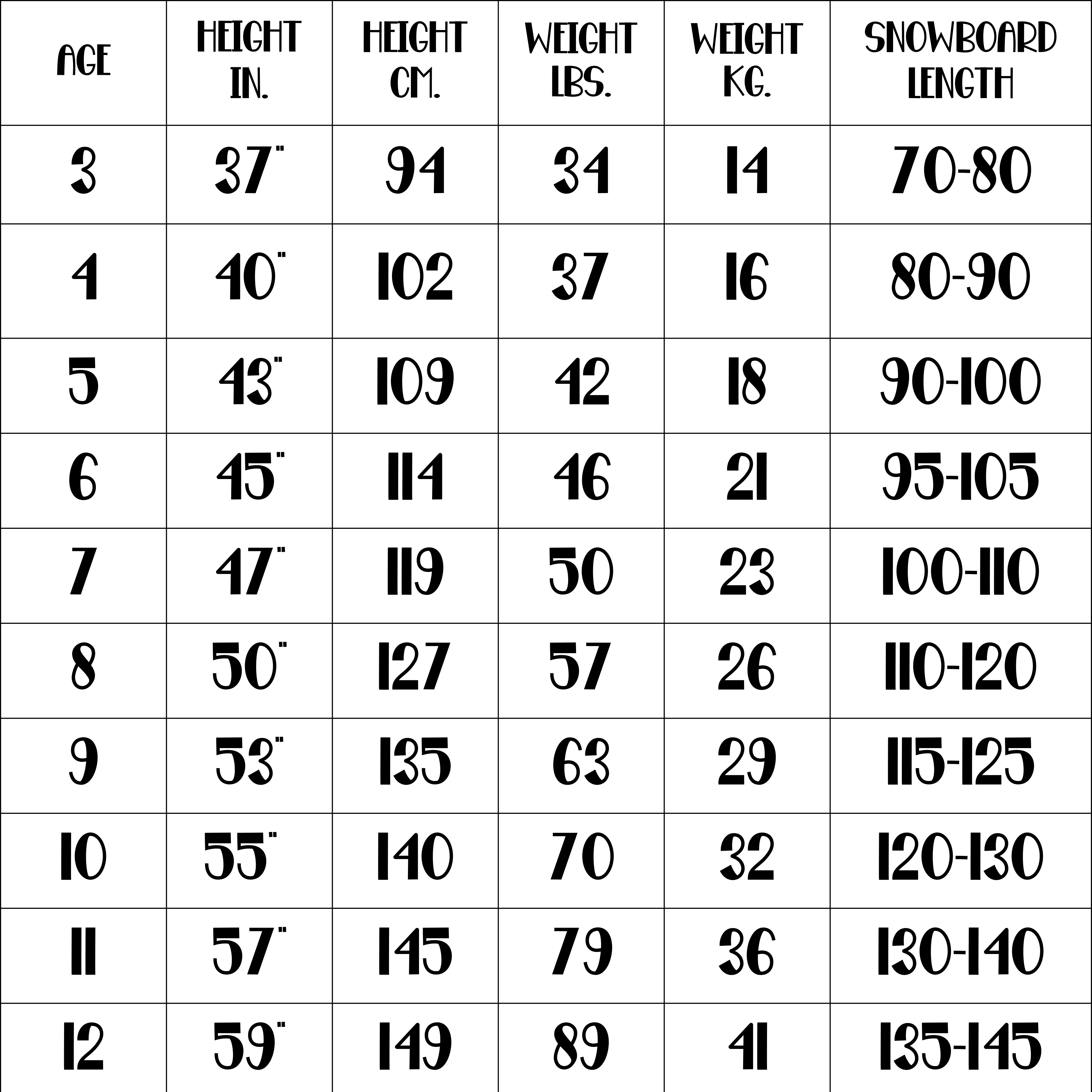YOUTH SKI SIZING GUIDELINES:
How to Find the Right Size Skis for Kids:
- Measure your child's height and weight.
- Locate that height on the kids' ski size chart below.
- Line up their height with the corresponding ski length to get the correct ski size range.

Height and weight are based off of the 50th percentile for children for each age listed on the left side of the chart.
What if my child is in between the heights listed on the size chart?
Your child might be between two of the heights listed; in that case find their weight on the chart. If they are light for their height, you're going to size a ski to the shorter height, and therefore will end up with shorter skis. If they are heavy for their height, you'll go off the taller height and end up with longer skis.
Reasons to size kids' skis shorter, closer to the chest:
- They are a beginner or cautious skier.
- Their weight is lighter than average for their height.
- They like to make short, quick turns and seldom ski fast.
Reasons to size kids' skis longer, closer to the nose:
- They are skiing fast and aggressively.
- They weigh more than average for their height.
- You want to purchase a ski with room to grow. Children grow fast and there are boots and outerwear designed to accommodate this, however, we do not recommend sizing their skis much bigger than the recommended range.
YOUTH SNOWBOARD SIZING GUIDELINES:
How to Choose the Correct Length Snowboard for a Child:
- Measure your child's height and weight.
- Locate their height on the size chart below.
- Match their height with the corresponding snowboard length in the right column.

Height and weight are based off of the 50th percentile for children for each age listed on the left side of the chart.
What if My Child's Height is Between Those Listed on the Size Chart?
If your child is between two of the heights listed, find their weight on the chart. If they are light for their height, size their snowboard close to the shorter end of the range, and if they are heavy for their height, go with something on the longer end of the range.
Reasons to size kids' snowboards shorter, closer to the chest:
- They are a beginner or cautious snowboarder.
- Their weight is lighter than average for their height.
- They like to make short, quick turns and seldom ride fast.
Reasons to size kids' snowboards longer, closer to the nose:
- They are riding fast and aggressively.
- They weigh more than average for their height.
ADULT SNOWBOARD SIZING GUIDELINES:
What Size Snowboard Should I Get?
How do you pick the correct snowboard length? The length of your snowboard will vary depending on your body weight and the type of riding you plan to do. Back in the day, traditional snowboard sizing meant you stand next to the snowboard and if the top hits your chin, great, it fits! While that may be a good place to start, things like ability level, weight, and construction of the board are also important factors in determining the appropriate board length.
So, for example, if you are going to be mostly freeriding consider getting a slightly longer board for more stability and speed, unless you’re looking at a volume shifted board. If it's a freestyle snowboard you are looking for, consider smaller sizes that will be easier to spin and maneuver in the terrain park or half-pipe.
Additionally, consider the following factors when deciding on a snowboard size:
- If you're riding primarily in the park or freestyle, pick a board on the shorter end of the size range.
- If you're riding is mostly all mountain, powder or freeriding, consider a snowboard on the longer end of the size range or grabbing a volume shifted board.
- If you are above average weight consider a longer snowboard.
- If you are a beginner, aim for a shorter board in your size range.
Adult Snowboard Size Chart

ADULT PERFORMANCE SKI SIZING GUIDELINES:
CHOOSING THE RIGHT FIT
Your choice of ski, boot design and size will always be a very personal and subjective decision. Here we have compiled some factors that should be taken into account when deciding on which ski size to choose.
Optimal ski length is determined according to (in order): weight, physical ability, skier height and type of skier (aggressive/non-aggressive). Less aggressive skiers should choose a smaller size, while more aggressive and experienced skiers may want to choose a size up.
How does it work?
Example Below:
- Measure your height: 175 cm
- Define your skiing level: experienced
- Choose your ski type: piste
- Calculate your required ski length: 175 + Experienced = 175 + [-5.0] = [170, 175] cm
